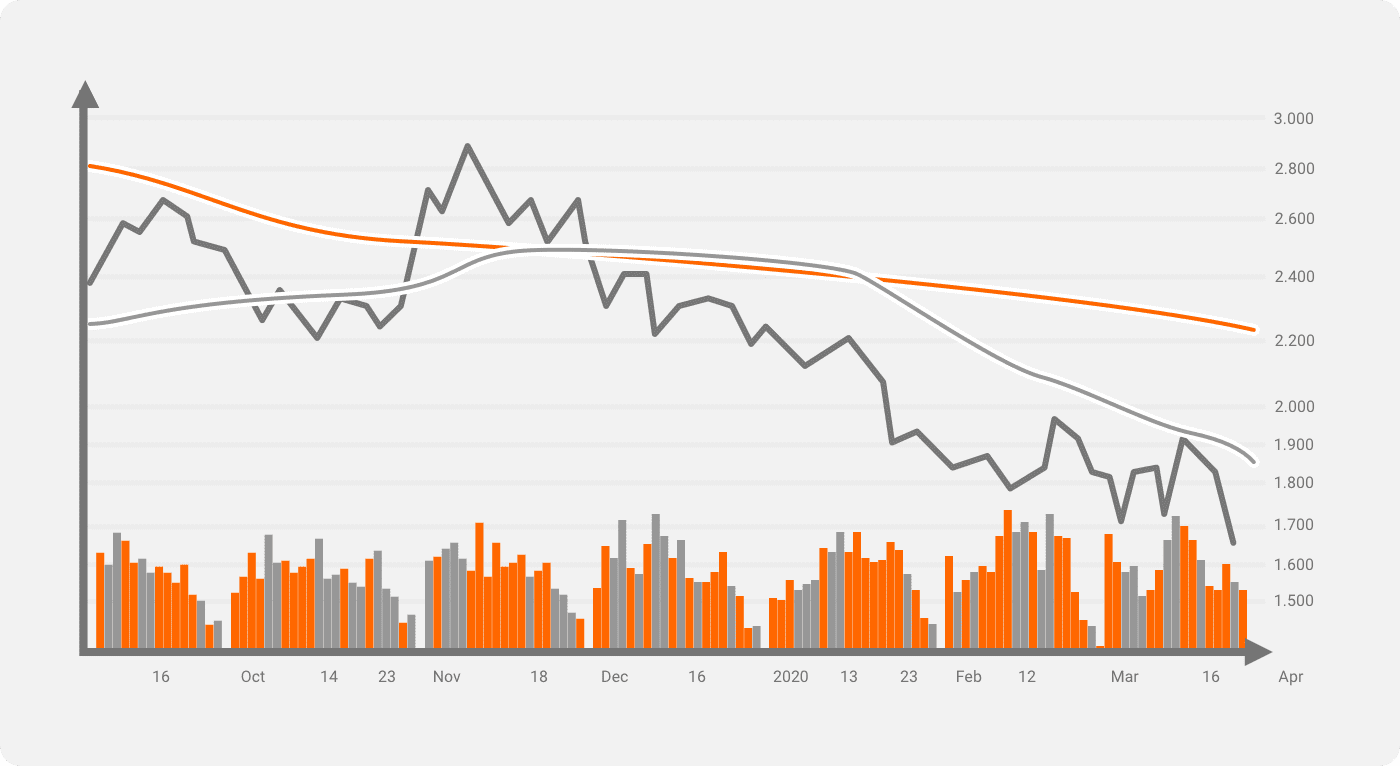Natural gas is one of the mainstays of the energy industry. It is used in a variety of ways, from electricity generation to industrial uses, and even powering the stoves of so many homes all over the world. Now with this utility comes significant market value of natural gas, which is traded in the financial market. There are a number of investment vehicles through which you can get in on trading this clean-burning commodity. One of which is natural gas futures. In this guide, we outline some key things you should know about this exciting market.
Natural Gas Overview
This commodity takes the third spot on the list of most used energy sources after oil and coal. Its use case has steadily grown over the years. It’s even expected to become the second most used energy source in the next ten years, according to the International Energy Agency.
The United States is the world’s largest producer of natural gas, followed by Russia, Iran, and Canada in that order.
These countries then trade the excess natural gas they produce and export it to other countries around the world. They do this through either pipelines or as liquefied natural gas (LNG) stored in super-cooled (cryogenic) tanks aboard large ships.
Natural gas has been a major source of energy around the world in the 1970’s. On the other hand the US only began developing it for commercial use after 1825. It is the cleanest burning fossil fuel, giving it the potential for green energy production.
Fossil gas contributes to about 31.8% of the United States’ energy use according to the American Geosciences Institute.
Today, natural gas powers many of the plants used to generate electricity. It’s also used for cooking, heating, and cooling.
You might also enjoy:
Structure of the Natural Gas Market
There are dozens of natural gas trading hubs around the world, though the most developed ones are in North America, Western Europe, and North Asia. This is because these regions have dense pipeline networks compared to others, allowing for easier and faster transportation among surrounding countries.
In the U.S., the most dominant natural gas trading hub is the Henry Hub located in Erath, Louisiana. Thanks to its excellent connectivity to storage facilities and efficient pipeline systems, Henry Hub is the official delivery location for natural gas futures contracts that are traded on the New York Mercantile Exchange (NYMEX).
The settlement prices at this Hub are then used as benchmarks for the entire natural gas market in North America as well as some parts of the global LNG market.
In Western Europe, the two most important trading hubs are the National Balancing Point (NBP) in the UK and the Title Transfer Facility (TTF) in the Netherlands. They set the settlement prices for the region. While in North Asia, settlement prices for LNG are through the Japan/Korea Marker (JKM) Index.
What are Natural Gas Futures?
A futures contract is essentially an agreement to buy or sell something, in this case natural gas, at a future specified date. The idea behind a futures market is that buyers and sellers are speculating or hedging on price movements and looking to lock down a profitable price now, for trading at a later date.
The world’s largest futures contracts for natural gas futures are the Henry Hub Natural Gas Futures (NG) traded through NYMEX; which is owned and operated by the Chicago Mercantile Exchange (CME Group). The market is not without its share of volatility as there are several factors that influence the price and production rate of natural gas.

As with most commodities listed on futures markets, it is not always compulsory to take physical delivery of natural gas when trading. In fact, trading transactions typically take place electronically with only profits or losses being reflected in one’s trading account.
Natural gas futures investors essentially make a profit or loss on each trade based on the price differences between when they bought the contract and when they sold it.
Natural Gas Futures Contract Specifications
This is essentially a breakdown of the terms contained in the standard NG futures contracts. These specifications govern the sale and purchase, which are then enforced by the trading exchange.
| Symbol | CME Globex: NG CME ClearPort: NG Clearing: NG TAS: NGT |
| Contract Unit | 10,000 million British thermal units (mmBtu) |
| Price Quotation | U.S. dollars and cents per mmBtu |
| Minimum Price Fluctuation | CME ClearPort: 0.001 per MMBtu = $10.00 CME Globex: Outright: 0.001 per MMBtu = $10.00 Inter-commodity spreads: 0.00025 per MMBtu = $2.50 TAS: Zero or +/- 10 ticks in the minimum tick increment of the outright |
| Trading Hours | CME Globex: Sunday – Friday 6:00 p.m. – 5:00 p.m. (5:00 p.m. – 4:00 p.m. /CT) with a 60-minute break each day beginning at 5:00 p.m. (4:00 p.m. CT) TAS: Sunday – Friday 6:00 p.m. – 2:30 p.m. (5:00 p.m. – 1:30 p.m. CT) CME ClearPort: Sunday – Friday 6:00 p.m. – 5:00 p.m. (5:00 p.m. – 4:00 p.m. /CT) with a 60-minute break each day beginning at 5:00 p.m. (4:00 p.m. CT) |
| Listed Contracts | Monthly contracts listed for the current year and the next 12 calendar years. Add monthly contracts for a new calendar year following the termination of trading in the December contract of the current year. |
| Settlement Methods | Deliverable |
| Termination of Trading | Trading ends on the 3rd last business days of the month prior to the contract month. Should the official Exchange holiday schedule change prior to listing Natural Gas futures, the expiration date originally listed will remain in effect. If the change occurs after, however, the expiration date automatically moves to the business day immediately prior. |
Data Source: CME
CME has also listed the E-mini natural gas futures contract which has a product code of QG. The prevailing difference is the lower contract unit at 2,500 mmBtu and a minimum price fluctuation of $0.005 per mmBtu.
Price Fluctuations and Tick Movements of Natural Gas Futures
The price of natural gas fluctuates is in increments of $0.001 on the futures exchanges. These increments are referred to as ticks, which represent the smallest movements that are made by a futures contract.
Traders use these ticks to determine their profit or loss by measuring the tick movements between the entry price and the actual price of the commodity by the settlement date. The broker you use will often show you how to calculate this tick movement, but it’s good to at least have an idea of how it works.
The tick value for a natural gas futures contract is $10 (10,000 mmBtu x $0.001). This means for every contract, a one tick movement above the entry price will yield a profit of $10. Whereas, one tick below will result in a $10 loss.
It’s also important to consider the number of contracts being held. Let’s say there’s a movement of 10 ticks and you’re holding five contracts; your profit or loss will be $500. (10ticks x $10) x 5 contracts.
In the case of E-mini natural gas futures contracts, the tick value is $12.50 (2500mmBtu x $0.005).
Margin Requirements
This refers to the minimum amount needed in your trading account for day trading natural gas contracts. These amounts tend to vary based on the specifications of your futures broker. Keep in mind that margin rates also differ based on whether the trader is closing out his position at the end of the day or holding the position overnight.
Positions held overnight attract a maintenance rate to accommodate potential losses. For instance, TradeStation® lists its margin requirements for natural gas futures (NG) at an initial margin of $1,595 and a maintaining rate of $1,450. E-Mini natural gas contracts, on the other hand, require a margin rate of $399 and a maintenance rate of $363.
NYMEX also has its own margin pricing for traders using its exchange.
Market Factors of Natural Gas
Since the natural gas futures market is primarily dependent on price fluctuations, it’s important to understand what factors influence this movement. Pricing is determined by global demand and supply for the physical commodity. Other things to consider for pricing are forecasts and expectations of traders based on current or future events.
In this way, the focus is not on the “real” value of natural gas, but on whether the market value will rise, fall or remain the same over a set period. Some of the main factors responsible for demand and supply of natural gas and their respective futures include:
- Seasonality – Changes in weather conditions play a crucial role in determining the prices of natural gas because it affects demand and supply. This allows gas producers to properly adjust their production rate, manage storage facilities and look to reduce their financial risks.Accommodations must also be made for unexpected disruptions such as an unscheduled, yet necessary pipeline maintenance, political turmoil or inclement weather.
- Consumption patterns – Heating and cooling are the main drivers for natural gas consumption patterns. This is especially the case in the United States. For instance, the demand for natural gas tends to rise during winter as more and more people look to stay toasty in their homes with their heating systems turned on.
- Price of competing fuel-based energy sources – The price of oil and coal will undoubtedly affect the price of natural gas. More recently, renewable energy sources, such as solar and wind have started to affect natural gas prices.
- World events – War, financial crises, pandemics (such as the coronavirus or COVID-19), elections and more will influence the demand and supply of natural gas.
- EIA reports – These weekly reports track the supply levels of natural gas, including those in storage.
Final Thoughts
Investing in natural gas futures can be a great way to explore the futures market. As natural gas use cases become more prevalent around the world, the market is expected to continue to evolve. However, a newbie trader may find the futures market a bit complicated. Therefore, it’s best to first have a clear understanding of the fundamentals of natural gas in order to make better buy or sell decisions.

